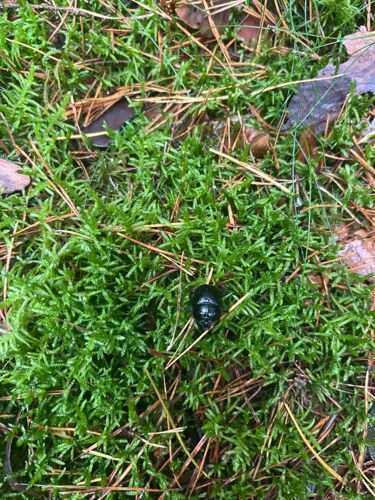Dung beetle
Scientific Name: Likely Geotrupidae or Scarabaeidae species, exact species not identifiable from image
Order & Family: Coleoptera (Beetles), Geotrupidae (Earth-boring dung beetles) or Scarabaeidae (Scarabs, including some dung beetles)
Size: Typically 5mm to 30mm, depending on the exact species. The one in the image appears to be on the smaller to medium side of this range.

Natural Habitat
Forests, grasslands, and pastures, particularly areas with mammal dung. The image shows it in mossy woodland undergrowth.
Diet & Feeding
Dung (excrement) of herbivores and omnivores. Some species also feed on fungi or decaying plant matter.
Behavior Patterns
Dung beetles are known for rolling dung into balls (roller dung beetles) which they bury, or burying dung directly underground (dweller and tunneler dung beetles). This behavior is primarily for feeding and reproduction, as the dung serves as food for both adults and larvae. They are typically nocturnal but some species are active during the day.
Risks & Benefits
Benefits: Essential ecosystem engineers, playing a crucial role in nutrient cycling and soil aeration, reducing parasite transmission in livestock, and secondary seed dispersal. No known risks to humans. They are indicators of ecosystem health.
Identified on: 10/6/2025